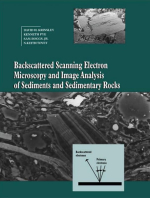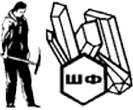Добрый день, Коллеги. Важное сообщение, просьба принять участие. Музей Ферсмана ищет помощь для реставрационных работ в помещении. Подробности по ссылке
Backscattered scanning electron microscopy and image analysis of sediments and sedimentary rocks / Сканирующая электронная микроскопия с обратным рассеянием и анализ изображений донных отложений и осадочных пород
During the past two to three decades, the scanning electron microscope (SEM) has become established as an essential tool in the study of sedimentary rocks, sediments, and soils. It provides a useful complement to the traditional role of the petrographic microscope, which became popular after the pioneering work of Henry Clifton Sorby in the second half of the nineteenth century (Sorby, 1877a,b, 1878). The modern SEM is a versatile analytical work station, capable of providing several different types of images, quantitative data relating to porosity and rock composition, and information about the crystallographic structure of individual minerals. The various images and chemical data can be processed by on-line computers or stored on disk for later analysis. Computer control can also be used to drive the electron beam, facilitating routine, automated analysis of samples (e.g., Minnis, 1984; Cook and Parker, 1988; Habesch, 1990; Ehrlich et al., 1991; Dijkshoorn and Fens, 1992).
Prior to the early 1980s, most SEM work in geology utilized the secondary electron (SE) mode to examine fine surface textural detail on sediment grains, fossils, and fracture surfaces of rocks (e.g., Krinsley and Doornkamp, 1973; Smart and Tovey, 1981; Welton, 1984; Trewin, 1988). This technique provides a great deal of useful textural information relating to sediment provenance, diagenesis, weathering history, and geotechnical properties. Its value is limited to some extent; however, because often it is not possible to distinguish among minerals that have similar morphologies, the textural relationships between different mineral phases are not always clear, and quantification of the sediment fabric is typically difficult. <...>




